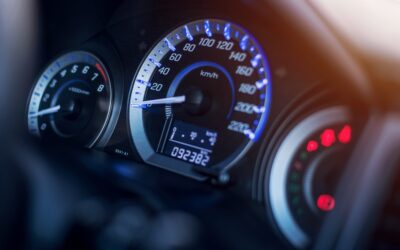We’re sure that you will already know what a handbrake is for – to prevent your car from rolling when you’ve stopped. If you’re completely new to driving, you may not be clear on exactly how a handbrake works, and when you should use it. It is one of the areas that your instructor will focus on during your driving lessons so we thought we would give you all a head start.
This is your beginner’s guide to how to use a handbrake. We’ll explore what it is, how it works, and when to use it.

What is a Handbrake?
Cars have two main brakes. One is operated by your feet, using a pedal you’ll find to the left of the accelerator. The other brake is operated by hand, which is why it’s called the handbrake. In most cars it’s operated by pulling a lever located next to the driver’s seat, by the gearstick.
You use your brake pedal to slow your car down when you’re driving, to come gently to a stop, or to perform an emergency stop. Your handbrake should only be used once you’ve stopped moving. While you’ll usually apply it by pulling a lever, in some newer cars, you activate the handbrake using a small button. This button will, again, usually be located near the gearstick.
Some extremely advanced cars even have automatic handbrakes. When you stop the car, it’s engaged automatically, only to be released when you press the accelerator pedal again. But if you’re just learning to drive, it’s unlikely you’ll be driving one of these expensive advanced models. Most likely, the car you learn to drive in will have a standard handbrake lever by the gearstick.
In an automatic car, you’ll engage the handbrake by putting the car into P, for “Park”.
What’s the Handbrake For, and How Does it Work?
Another name for the handbrake is the parking brake, which should give you a clue to its use. It’s designed to stop your car from rolling when you’ve stopped. This is particularly useful when you’ve stopped on hills or inclines.
How does a handbrake work?
In most cars, when you apply the handbrake you activate a pulling mechanism that’ll lock your two rear wheels. But if the car has an electronic handbrake, applying it will activate mechanisms attached to each wheel’s brake calliper. So when you apply an electronic handbrake, you’ll lock all the wheels.
When to Use a Handbrake
It’s all too easy for learner drivers to overuse their handbrake. Indeed, many learners fail their test through applying the handbrake too often, or too soon. For instance, you should never apply the handbrake when the car’s still moving.
You should only use the handbrake in certain circumstances:
- When Parking – During your driving test, your examiner will ask you to park up at least once. After you perform your parking manoeuvre, once your car’s come to a complete stop, apply the handbrake.
- When Stopped – When you stop at a junction, or at traffic lights, you might want to apply your handbrake. It’s a good idea to do so if you feel you’ll be stopped for a while, or if you’ve stopped on an incline. If you’ve stopped at a pedestrian crossing, applying your handbrake will prevent your car from rolling forward even if another car shunts into the back of you. So in this case, the handbrake can make things that little bit safer for pedestrians.
- When Turning – Three-point-turns are no longer part of the UK driving test, but you may still have to perform this manoeuvre during your test. If your turning in a road that slopes towards the pavement, move slowly, use clutch control, and apply the handbrake after each manoeuvre, to avoid rolling into the kerb.
- After an Emergency Stop – To perform an emergency stop, you need to use your brake pedal and, if you’re driving a manual car, your clutch pedal. But once your car’s come to a stop, you should apply the handbrake and put your car into neutral. This is to prevent your car from suddenly jolting forward after you’ve stopped.
- Hill Starts – Again, you won’t be tested on your hill starts, but they’re an important part of driving, nonetheless. If you’ve moving off having stopped on a hill, using your handbrake in combination with your biting point will prevent you from rolling backwards.
Essential Information for Learner Drivers!
Like with all aspects of driving, when it comes to using your handbrake, the more you practice, the more familiar and confident you’ll get. That’s why it pays to get in as much driving time as possible before you take your test. Your driving lessons are one thing, but it’s also a good idea to get practice outside of your lessons.
There are certain rules for driving outside of your lessons, which we covered in some detail here. But a major thing to remember is car insurance. It’s illegal to drive uninsured, and if you’re a learner, you’ll need all the protection you can get.
We offer learner driver insurance that’ll bring you complete peace of mind at a price you can afford. Head here for more information, and a free quote.



